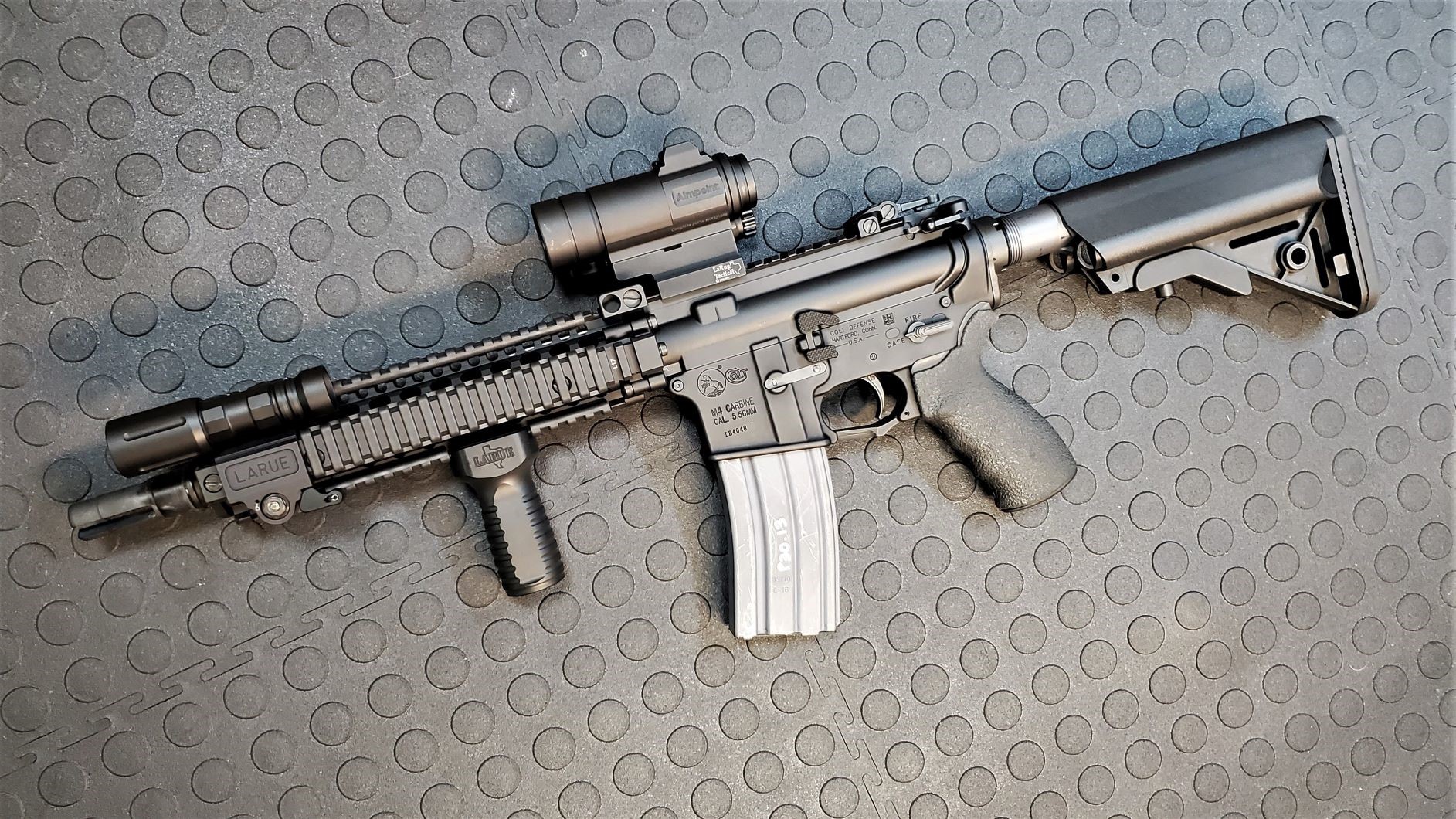My first build (last weekend)-
Definitely a vanity build - Black and gold are the colors of a graduate fraternity I'm in. Not planning to drag this through training classes (I've got a couple Saint Edges and another for that.) Really happy with the way this turned out.
Looks great! I'm sure it looks even better in-person!

I had a couple friends/fraternity brothers that consulted/walked me through the build in-person with all the correct tools and bench to make this smooth and efficient.
Thoughts on the process:
1 - Almost everyone should build at least 1 AR (hopefully w/ support and tools)
2- I can see the appeal/addiction of building ARs.
and...
4 - The right tools are crucial for a smooth build - would not want to attempt this without all the tools I had available to me.
Yup.
Tools and the know-how are key.
While technically straightforward, I have yet to find a single free resource that provides *all* the tricks. I still firmly believe that it's possible for someone who is dedicated enough to sort it all out and do it all the right way with only free online resources as a guide, I am very cognizant that it isn't the easiest way to go about it.
If you're so inclined, attending a "gunsmithing class" that is specifically focused on the DI AR15 platform can drastically boost your standings on the power-curve. It not only will help you troubleshoot the gun in a post-event, on-the-bench, manner, but will actually also help you run the gun better overall. I find that the deeper understanding into the platform helps me with "in situ," on-the-fly stoppage reduction, too. I feel it's akin to studying physiology first, before going into pathology. Knowing how things work when they're going right helps when things are going wonky.
Meanwhile, having the right tools not only make the work easier, it also insures that it's done correctly, with less of a chance of "hurting" parts and areas that you're both working on and not working on.
3 - I'm not convinced that picking out all the parts separately (even on sale/closeout) is all that much cheaper than buying a complete rifle. However, buying separately - one can use exactly the parts one wants - which is a total reflection of this build.
The way the market is today, I absolutely agree. There were certain points in history where the calculus flipped either one way or the other, of-course, and currently, I definitely believe that you're on-the-mark in your statement.
5 - This is a (financial) rabbit hole one should really think about before going full bore into it. I personally don't think I would build enough to make it worth the investment in all the needed tools.
Understand that there's a "hobbyist level" list of "crucial/nice-to-have" tools...and then there's another level for those who build more frequently....and yet another level for those who really want to get into it (be it for their own edification or for professional needs.
It's definitely a rabbit-hole.
A lot of the basic-level tools may already be in the possession of -or aren't far away from- what a typical "DIY" greasemonkey shad-tree may already have in their garage or workshop. But as the end-user starts to get going, it becomes like a Porsche options-list: those costs really start to add-up.
Again, if you are interested, I'd recommend that you either act quickly and grab the necessary Information off of the SOTAR (School of the American Rifle, headed-up by Chad Albrecht) Facebook Group or support the cause by joining the SOTAR Society (at just under $20 for yearly dues) and downloading the tools list from that location. Albrecht broke the list into a three-tier setup, progressing from hobbyist to professional.
6 - If doing it all over again - I probably would have gone with a complete upper (on sale?) and swapped the handguard with the gold. Maybe the same with a complete lower (on sale?) and swapping out for the gold parts. I think I could have done this spending less money for similar quality....or, at least the quality good enough for my purposes - but maybe not either. ???????
It really depends, right?

As your post ended with that question, it's really just that - there's a lot that's left up to fate/chance, with how the market is and any sales/specials that helps with either product costs or even perhaps shipping.
Right before the "armorer's course" I signed up for, I purchased a complete Aero specifically with the intent of taking it there and tearing it apart and putting it back together. At the time because of the combination of the condition of the mid-tier AR-market and a retailer special, one would have been very, very hard-pressed to build from "equivalent" parts and get to my purchase price.
But just months later, parts prices fell as they become more available - and subsequently arguably better-quality full-factory-build guns came to-market that really made for stiff competition with what I'd bought.
A lot of it is very, very conditional.



